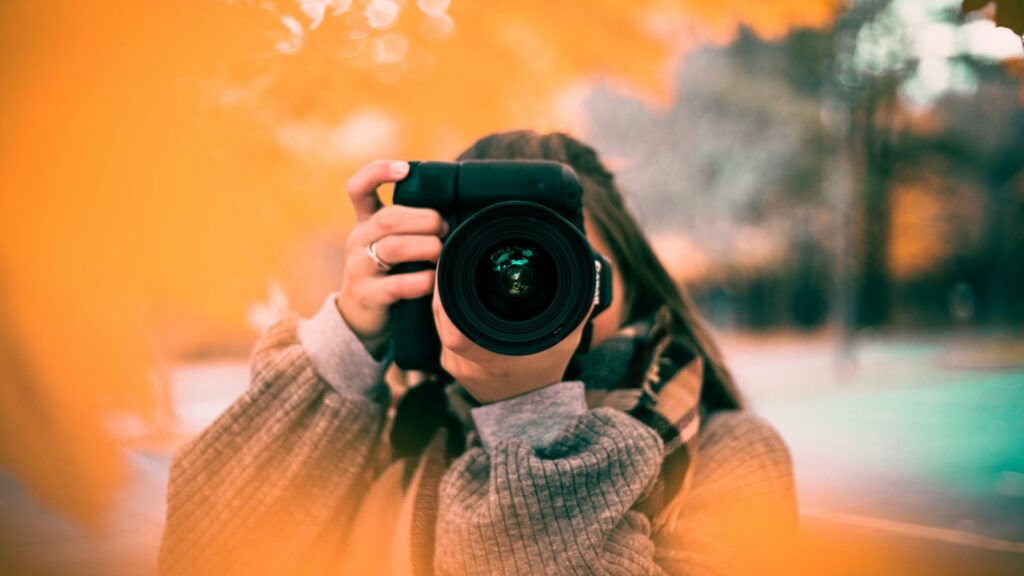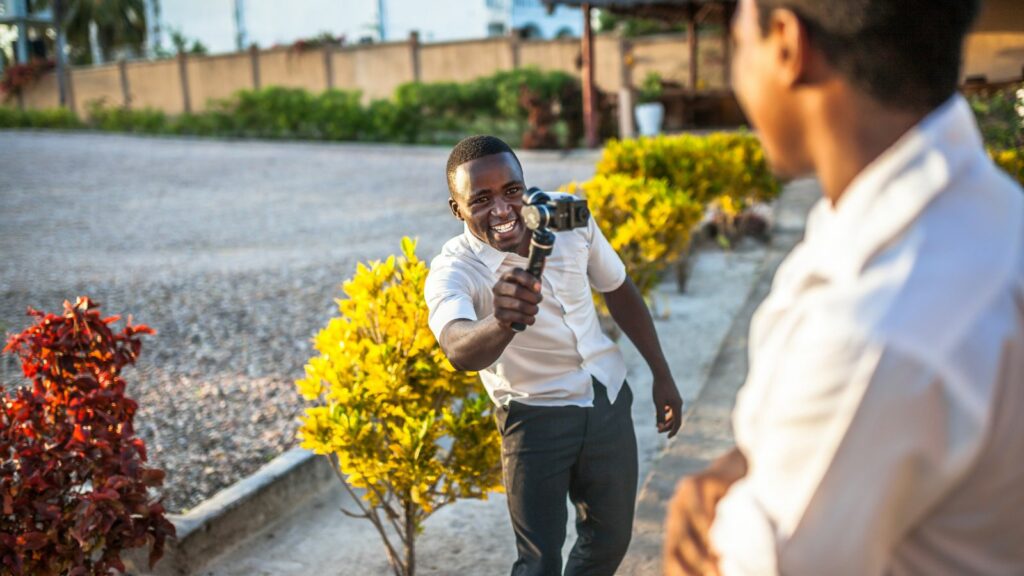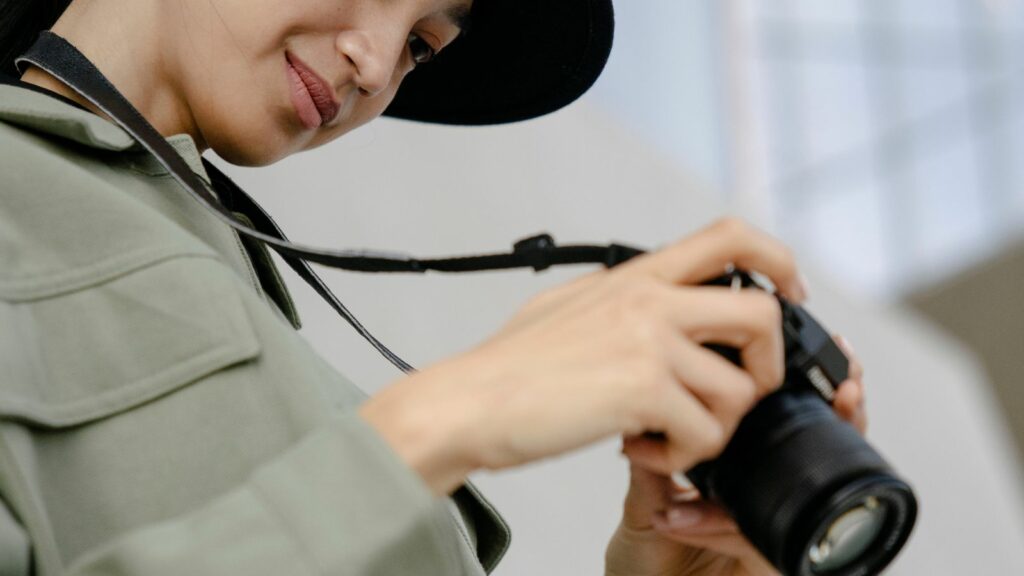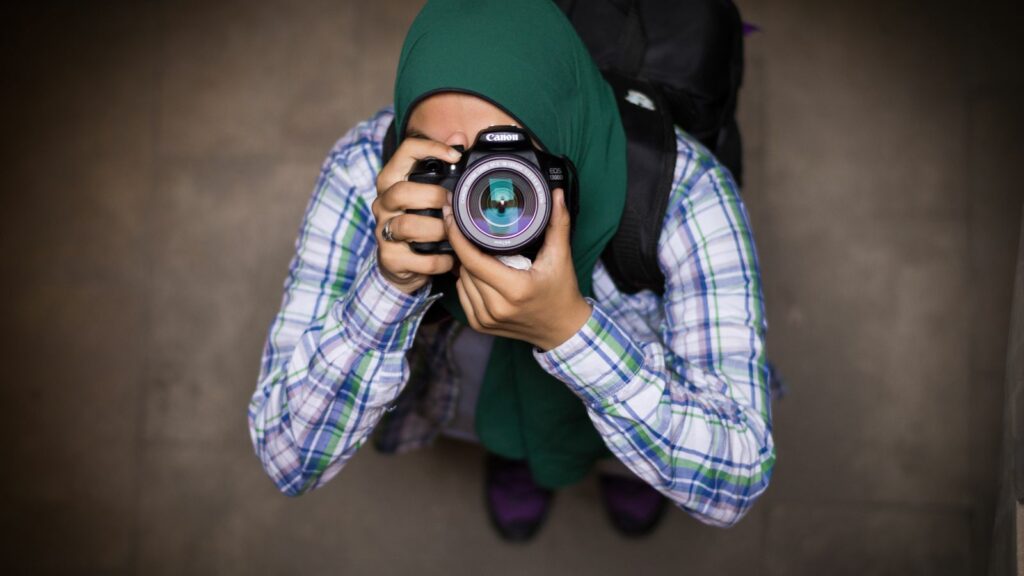In the world of photography, the right camera angle can make or break an image. It’s the unseen hand that shapes how viewers interact with a photograph, guiding their eyes and influencing their emotions. This article will delve into 5 camera angles that every photographer, novice or seasoned, should have in their toolkit.
5 Camera Angles
The 5 camera angles discussed earlier in the article form the foundation for emotion and storytelling in photography. They bring to light the different facets of a subject, each offering a distinct depth and perspective.
Angle 1: The High Angle

The high angle illustrates vulnerability and submission. Pointing the camera down on a subject from above often conveys a sense of dominance on the viewer’s end—as if viewing the world from the standpoint of an observer, uninvolved yet omnipotent. Often seen in films to emphasize the character’s vulnerability or when capturing bustling cityscapes, high-angle examples include bird’s-eye images of city streets teeming with life.
Angle 2: The Low Angle
In stark contrast to high angles, low angles echo power and significance. Shooting from a lower vantage point towards the subject tends to portray a dominant persona. It naturally directs the viewer’s gaze upwards, compelling viewers to reckon with the subject’s grandeur. Skyscrapers photographed from a low angle, illustrating their majesty, serve as ideal examples for this angle.
Angle 3: Eye Level Angle
Eye level angle creates an atmosphere of equality and understanding. It allows the viewer and the subject to be on the “same level,” indirectly fostering feelings of intimacy and connection. These shots bring a sense of familiarity, often used in portraiture or candid photography. An interview documented using an eye-level camera creates a bond of understanding between the viewer and the person in focus.

Angle 4: Dutch Angle
The Dutch angle, infuses disorientation and creates a sense of uneasiness. It involves tilting the camera at an angle, throwing off the expected equilibrium. This method often indicates a skewed reality, throwing viewers into a whirlpool of uncertainty. This technique can be seen in psychological thrillers or suspense films, where the dutch angle amplifies viewers’ suspense.
Angle 5: Overhead Angle
Finally, the overhead or bird’s eye view angle offers a broader perspective not generally observable by the human eye. Photographing subjects from directly above often results in abstract compositions that highlight shapes and patterns. For example, overhead shots of a dense forest canopy often produce awe-inspiring images of nature’s intricate patterns.
The Impact of Camera Angles on Photo Composition
Emotion and Storytelling through Camera Angles
Harnessing camera angles effectively means creating an emotional link between the image and its viewers. High angles may encourage feelings of vulnerability or insignificance. A photo taken from a high angle, depicting a solitary figure in a crowd, for example, can evoke a sense of isolation or loneliness.

Juxtaposed to high angles, low angles can project strength and dominance, channelling an air of intimidation or awe. A carefully crafted low angle shot of a towering architecture piece conveys its enormity, leaving the viewer astounded.
Eye-level angles allow for a connection, fostering familiarity and intimacy. A shot taken at eye-level with a person can stimulate a sense of conversation or interaction between the viewer and the individual in the photograph.
Shifting the camera to a Dutch angle disrupts equilibrium, eliciting feelings of unease, suspense, or chaos. This angle is a go-to in thrillers and noir films, suggesting something isn’t quite right.
Capturing Beautiful Scenes
Mastering the 5 camera angles is indeed a game-changer for any photographer. It’s a powerful tool that goes beyond capturing beautiful scenes – it’s about narrating compelling stories that evoke emotions. By understanding the emotional implications of high, low, eye-level, Dutch, and overhead angles, photographers can shape the viewer’s context, pace, and impressions. The right camera angle, influenced by factors such as subject matter, storytelling goals, location constraints, composition, scale, and lighting conditions, can create images that resonate deeply.



